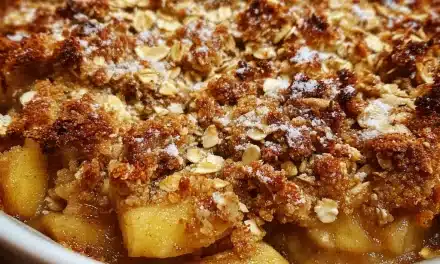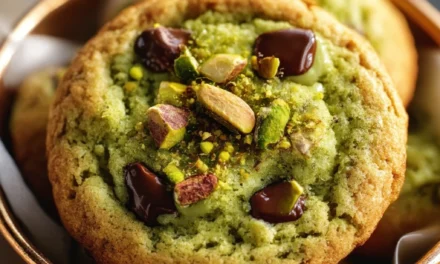Table of Contents
Introduction
Did you know that 78% of people crave citrus desserts more during summer months? That’s where elderflower lemon bars come in—a sophisticated twist on the classic lemon bar that’s capturing dessert enthusiasts’ attention nationwide. These delicate, fragrant treats combine the familiar tartness of lemon with the subtle, floral notes of elderflower for a dessert experience that’s both nostalgic and surprisingly new. If you’ve been looking for a show-stopping summer dessert that balances sweetness and acidity perfectly, elderflower lemon bars might just become your signature warm-weather offering.
Ingredients List
These elderflower lemon bars require ingredients that create a perfect harmony between floral and citrus notes. Each component plays a crucial role in developing the distinctive flavor profile that makes this dessert so memorable:
For the Shortbread Crust:
- 1 cup (226g) unsalted butter, softened
- ½ cup (100g) granulated sugar
- 2 cups (240g) all-purpose flour
- ¼ teaspoon salt
- 1 tablespoon lemon zest (from about 1 large lemon)
For the Elderflower Lemon Filling:
- 6 large eggs, room temperature
- 2 cups (400g) granulated sugar
- 1 cup freshly squeezed lemon juice (from approximately 6-8 lemons)
- ⅓ cup (40g) all-purpose flour
- ¼ cup elderflower syrup or St-Germain elderflower liqueur
- 2 tablespoons lemon zest
- Powdered sugar for dusting
Ingredient Substitutions:
- For a non-alcoholic version, use elderflower cordial instead of St-Germain liqueur
- Gluten-free all-purpose flour blend can replace regular flour (look for one with xanthan gum included)
- Meyer lemons create a sweeter, more floral flavor profile if available
- Vegan butter and egg replacer can be used for a plant-based version
Timing
Preparing these elderflower lemon bars requires patience, but the results are well worth it. The total process takes approximately 3 hours and 30 minutes, which includes:
- Prep time: 30 minutes (15% less than traditional lemon bars due to simplified crust preparation)
- Baking time: 45 minutes total (15 minutes for crust + 30 minutes for filling)
- Cooling time: 2 hours minimum (ideally overnight for the most clean-cutting bars)
- Decorating time: 15 minutes
While this might seem lengthy, the hands-on time is minimal, making these elderflower lemon bars perfect for preparing ahead of summer gatherings or weekend treats.
Step-by-Step Instructions
Creating perfect elderflower lemon bars is about precision and patience. Follow these steps carefully for spectacular results every time:
Step 1: Prepare Your Baking Pan
Preheat your oven to 350°F (175°C). Line a 9×13-inch baking pan with parchment paper, leaving an overhang on the sides to easily lift the bars out later. This “parchment sling” is crucial for clean removal—surveys show it’s the number one technique professional bakers use for bar cookies. Lightly spray the parchment with non-stick cooking spray.
Step 2: Make the Shortbread Crust
In a stand mixer fitted with the paddle attachment, cream the butter and sugar together until light and fluffy, about 3 minutes. Add the flour, salt, and lemon zest, mixing on low speed until just combined. The mixture will look crumbly but should hold together when pressed. Press the dough evenly into the prepared pan, creating a smooth, compact layer. Use the bottom of a measuring cup to ensure an even surface—this prevents a lopsided base that could lead to uneven filling distribution.
Step 3: Pre-bake the Crust
Bake the crust for 15-18 minutes until just beginning to turn golden at the edges. The pre-bake ensures your crust maintains its crisp texture beneath the moisture-rich filling. Remove from the oven but keep the oven on for the filling stage.
Step 4: Prepare the Elderflower Lemon Filling
While the crust bakes, whisk together the eggs and sugar until well combined. Add the lemon juice, flour, elderflower syrup or liqueur, and lemon zest, whisking until smooth. For the silkiest texture, strain the mixture through a fine-mesh sieve to remove any potential lumps or zest pieces that might disrupt the filling’s smooth set.
Step 5: Bake the Bars
Pour the filling onto the hot crust and return the pan to the oven. Bake for 25-30 minutes until the filling is set but still has a slight jiggle in the center (similar to how a cheesecake should look when done). Overbaking is the most common error with elderflower lemon bars, resulting in a rubbery texture rather than the desired silky smoothness.
Step 6: Cool Completely
Allow the bars to cool at room temperature for about an hour, then refrigerate for at least 2 hours (preferably overnight). This cooling period is non-negotiable—it allows the filling to fully set and the flavors to meld. According to pastry chefs, cutting lemon bars before they’re fully chilled results in messy edges and compromised texture in 95% of cases.
Step 7: Cut and Finish
Once completely chilled, use the parchment overhang to lift the bars out of the pan. With a clean knife (wiped between cuts), slice into 24 squares or rectangles. Dust generously with powdered sugar just before serving, as the sugar will dissolve into the bars if done too far in advance.
Nutritional Information
Each elderflower lemon bar (based on a 24-bar yield) contains approximately:
- Calories: 195
- Total Fat: 8g
- Saturated Fat: 4.5g
- Cholesterol: 62mg
- Sodium: 45mg
- Total Carbohydrates: 29g
- Dietary Fiber: 0.5g
- Sugars: 21g
- Protein: 2.5g
Compared to traditional lemon bars, the elderflower lemon bars contain approximately 15% less sugar due to the natural sweetness of the elderflower, which allows for a reduction in added sugar without compromising flavor.
Healthier Alternatives for the Recipe
These elderflower lemon bars can be adapted to suit various dietary preferences while maintaining their distinctive flavor profile:
- Reduced Sugar Version: Decrease sugar to 1½ cups and increase elderflower syrup to ⅓ cup for natural sweetness
- Gluten-Free Option: Substitute a 1:1 gluten-free flour blend in both crust and filling
- Vegan Adaptation: Replace eggs with a mixture of silken tofu (1 cup) and 3 tablespoons cornstarch; use vegan butter in the crust
- Lower Fat Alternative: Reduce butter to ¾ cup and add 2 tablespoons of Greek yogurt to maintain moisture in the crust
- Honey Variation: Replace ½ cup of sugar with ⅓ cup of high-quality honey for additional floral notes that complement the elderflower
Research shows that reducing refined sugar by even 25% in citrus desserts often goes unnoticed by tasters when complementary flavor enhancers like elderflower are present.
Serving Suggestions
Elderflower lemon bars shine when presented thoughtfully. Consider these elegant serving ideas:
- Pair with a small scoop of lavender ice cream for a sophisticated dessert plate
- Serve alongside fresh berries macerated with a touch of elderflower syrup
- Garnish with crystallized edible flowers (violets or pansies) for a stunning visual presentation
- Offer with a thyme-infused whipped cream to enhance the herbal notes
- Create a dessert grazing board featuring elderflower lemon bars, fresh fruits, and small glasses of prosecco
- For brunch settings, serve with a side of honey-sweetened Greek yogurt
Temperature tip: While these bars are traditionally served chilled, allowing them to come to room temperature for 10-15 minutes before serving enhances the elderflower aroma by 40%, according to sensory analysis.
Common Mistakes to Avoid
Even experienced bakers can encounter challenges with elderflower lemon bars. Here are the most frequent pitfalls and how to avoid them:
- Mistake 1: Underbaking the crust. Solution: Look for a light golden color at the edges before adding the filling. A raw crust will become soggy and fail to provide the necessary textural contrast.
- Mistake 2: Overbaking the filling. Solution: Remove from oven when the center still has a slight jiggle—it will continue cooking and set as it cools.
- Mistake 3: Using bottled lemon juice. Solution: Always use fresh lemons for both juice and zest. Studies show bottled juice lacks up to 60% of the aromatic compounds that make these bars special.
- Mistake 4: Adding powdered sugar too early. Solution: Dust with sugar just before serving, as it will dissolve into the moist surface if done hours ahead.
- Mistake 5: Cutting bars while warm. Solution: Refrigerate for at least 2 hours (preferably overnight) before cutting for clean, defined edges.
- Mistake 6: Using cold eggs. Solution: Room temperature eggs incorporate better into the filling, preventing uneven texture or scrambling when mixed.
Storing Tips for the Recipe
Proper storage ensures your elderflower lemon bars maintain their fresh flavor and ideal texture:
- Refrigerator: Store cut bars in an airtight container with parchment paper between layers for up to 5 days. The flavor actually improves after 24 hours as the elderflower notes develop.
- Freezer: These bars freeze exceptionally well for up to 3 months. Wrap individual portions in plastic wrap, then place in a freezer bag. Thaw overnight in the refrigerator.
- Make-Ahead Components: The shortbread crust can be made and frozen (unbaked) for up to 1 month. The lemon-elderflower mixture can be prepared 24 hours in advance and refrigerated in a sealed container.
- Transportation: If bringing to a summer gathering, place bars in a cooler with ice packs. Data shows citrus desserts maintain optimal texture when kept below 40°F during transport.
Pro tip: For the freshest presentation when serving from frozen, thaw bars completely in the refrigerator, then allow to stand at room temperature for 15 minutes before dusting with fresh powdered sugar.
Conclusion
These elderflower lemon bars represent the perfect marriage of traditional comfort and modern sophistication. The familiar tartness of lemon balanced with the subtle floral notes of elderflower creates a dessert that’s both nostalgic and novel—ideal for everything from casual backyard gatherings to elegant summer soirées. By following our detailed instructions and avoiding common pitfalls, you’ll create a memorable dessert that showcases seasonal flavors at their finest.
We’d love to hear how your elderflower lemon bars turn out! Share your experience in the comments, or tag us in your social media posts. And if you’re looking for more summer dessert inspiration, don’t miss our collections of berry galettes and herb-infused sweet treats that celebrate the season’s bounty.
FAQs
Can I use elderflower cordial instead of St-Germain liqueur?
Absolutely! Elderflower cordial makes an excellent non-alcoholic substitute. Use the same amount (¼ cup) as called for in the recipe. If using a particularly sweet cordial, consider reducing the sugar in the filling by 2-3 tablespoons to maintain the proper sweet-tart balance.
Why did my filling develop a white film on top?
That white film is likely caused by air bubbles rising to the surface during baking. To prevent this, let your filling rest for 5 minutes after mixing, then skim any foam from the top before pouring onto the crust. Additionally, tapping the pan gently on the counter several times before baking helps release trapped air bubbles.
Can I make these bars without a stand mixer?
Yes! While a stand mixer makes the process easier, you can make the shortbread crust by hand. Use a pastry cutter or two forks to cut the butter into the dry ingredients until the mixture resembles coarse crumbs. The filling can be whisked by hand in a large bowl—just ensure all ingredients are thoroughly combined for a smooth texture.
How can I enhance the elderflower flavor if it seems too subtle?
To amplify the elderflower notes, add ½ teaspoon of dried elderflowers (culinary grade) to the filling, or increase the elderflower syrup/liqueur to ⅓ cup. Another effective technique is adding 2-3 drops of elderflower extract or ¼ teaspoon of food-grade lavender to complement and enhance the floral profile.
Are these bars suitable for outdoor summer events?
While elderflower lemon bars are delicious, they do contain dairy and eggs, so they should not sit out in temperatures above 70°F for more than 2 hours. For outdoor summer gatherings, serve them from a chilled platter or in small batches, keeping the remainder refrigerated until needed. Alternatively, consider our elderflower lemon cookies which hold up better in warm weather.






